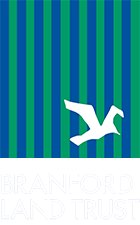A few decades ago, ospreys were endangered in Connecticut. According to the Cornell Lab of Ornithology, “osprey numbers crashed in the early 1950s to 1970s, when pesticides poisoned the birds and thinned their eggshells. Along the coast between New York City and Boston, for example, about 90% of breeding pairs disappeared. Osprey studies provided key support for wider legal arguments against the use of persistent pesticides. After the 1972 U.S. DDT ban, populations rebounded, and the Osprey became a conservation success symbol.”
Due to those recovery efforts, and the efforts of the BLT Osprey Program and a host of local volunteers, there is a healthy osprey population in Branford. Today, there are natural nesting spots (dead trees) along the shore, as well as approximately 40 osprey platforms throughout town. Approximately three-quarters of the platforms are on BLT land.
For many years the Osprey Program worked to establish and maintain a healthy osprey population in Branford. Given its extensive estuary marshes, many owned by BLT, Branford is an ideal summer breeding area for these magnificent fish hawks. There were two components of our efforts: creating and maintaining nesting sites in suitable environments, and offering educational programs on the life cycle of the osprey. With the success of our local osprey population, the program is no longer active.
However, osprey platforms are still maintained by local volunteers throughout the year. If you see one in need of repair or have concerns, please contact the BLT by email.



